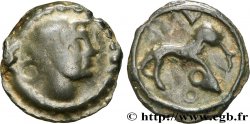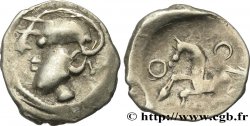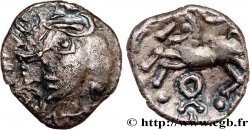bga_232234 - EDUENS, ÆDUI (BIBRACTE, Area of the Mont-Beuvray) Denier VIIPOTAL, fourré
Not available.
Item sold on our e-shop (2011)
Price : 65.00 €
Item sold on our e-shop (2011)
Price : 65.00 €
Type : Denier VIIPOTAL, fourré
Date: c. 60-50 AC.
Mint name / Town : Autun (71)
Metal : silver
Diameter : 13 mm
Orientation dies : 7 h.
Weight : 1,65 g.
Rarity : R1
Coments on the condition:
Petit denier sur un flan court et fourré avec les types décentrés et incomplets. Patine sombre avec des nuances brunes orangées
Catalogue references :
Predigree :
Reprise par le déposant le 14.01.2011
Obverse
Obverse legend : ANÉPIGRAPHE.
Obverse description : Buste féminin diadémé et drapé à gauche ; grènetis.
Reverse
Reverse legend : [VIIPOTAL].
Reverse description : Guerrier gaulois debout de face, vêtu militairement, tenant de la main droite une lance et un sanglier enseigne et tenant de la main gauche un bouclier oblong ; grènetis.
Commentary
L'attribution traditionnelle des deniers de cette série est remise en cause dans le Nouvel Atlas, tome 3 qui restitue ce denier aux Éduens. Sur cette monnaie, la légende VIIPOTAL est complètement hors flan.







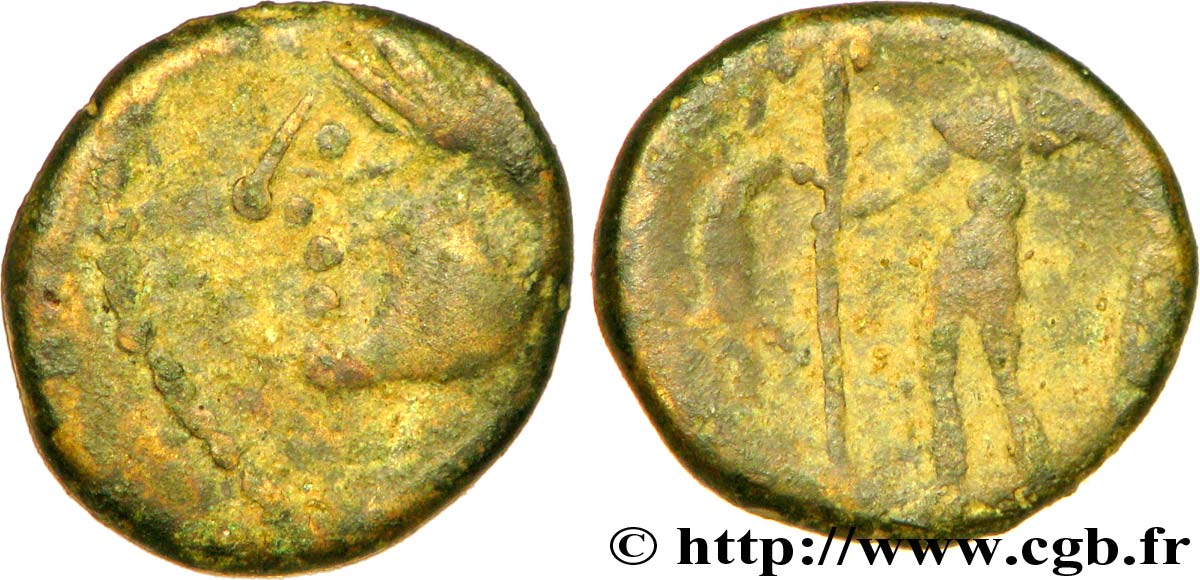
 Report a mistake
Report a mistake Print the page
Print the page Share my selection
Share my selection Ask a question
Ask a question Consign / sell
Consign / sell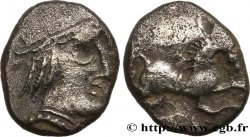
 Full data
Full data